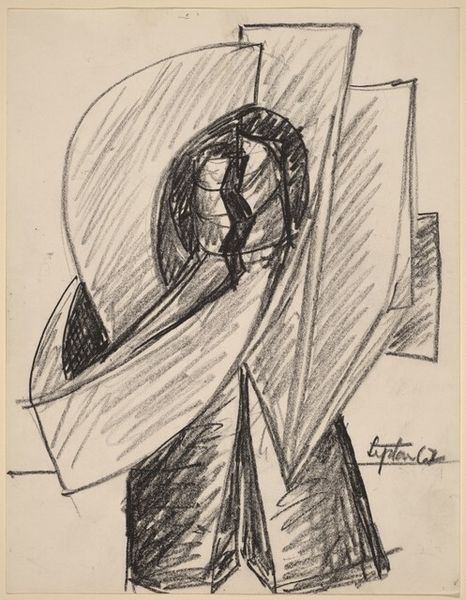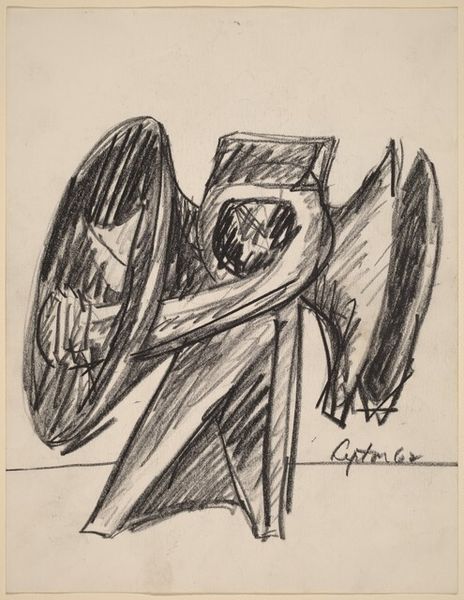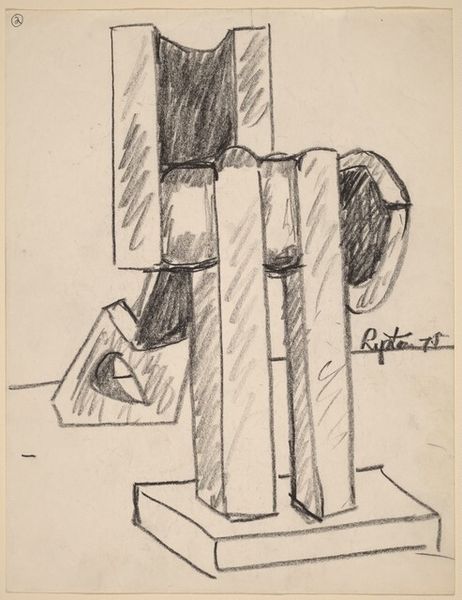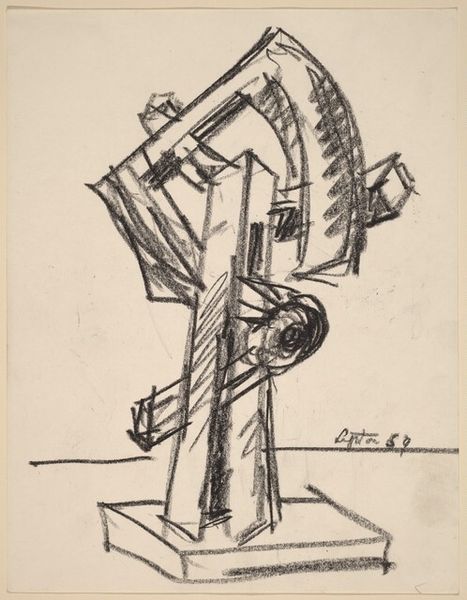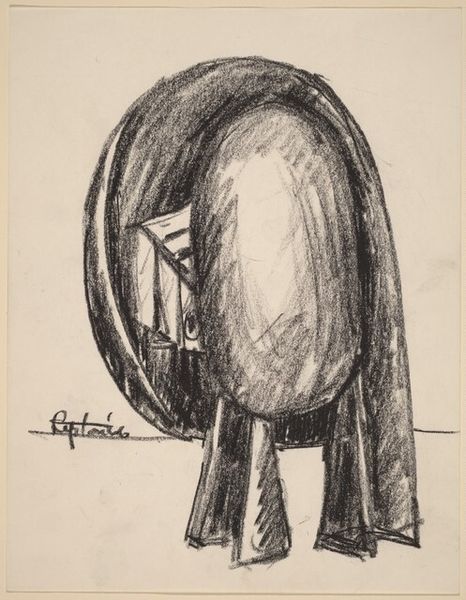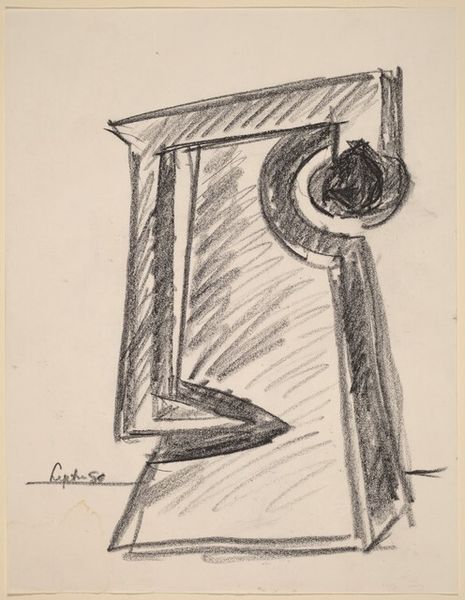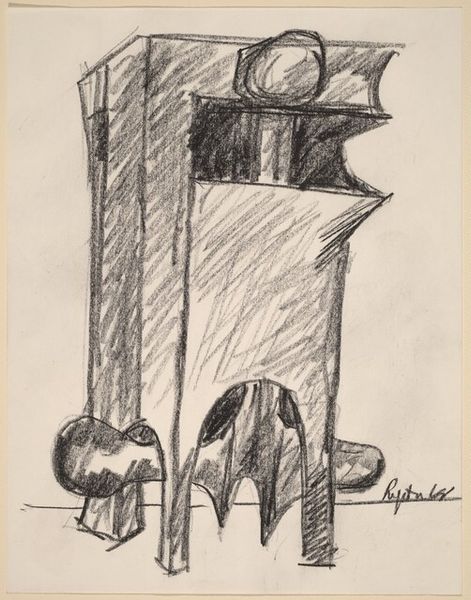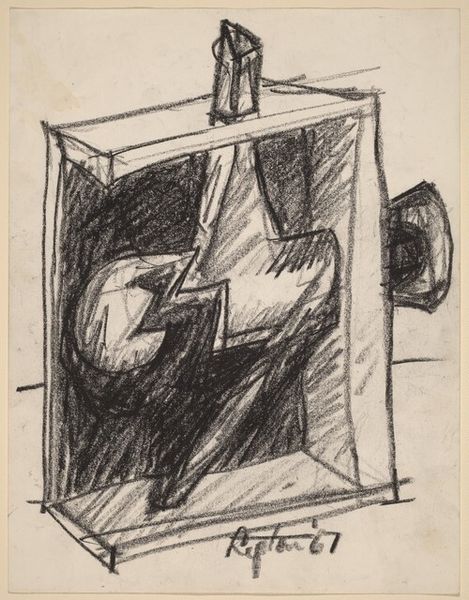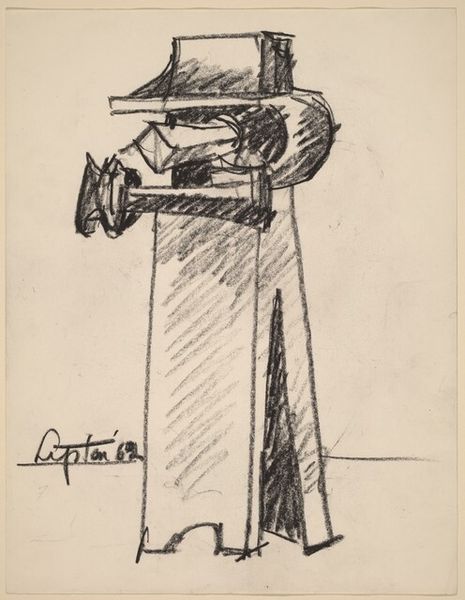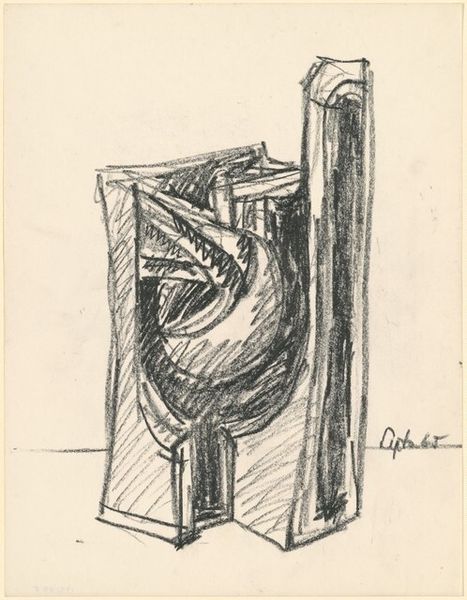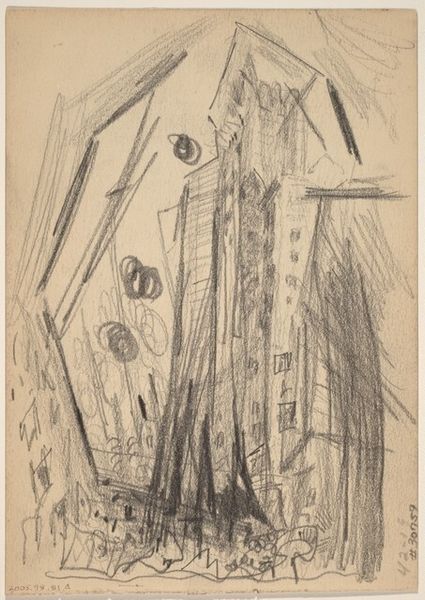
drawing, charcoal
#
abstract-expressionism
#
drawing
#
form
#
abstraction
#
line
#
charcoal
Dimensions: sheet: 27.94 × 21.59 cm (11 × 8 1/2 in.)
Copyright: National Gallery of Art: CC0 1.0
Seymour Lipton made this study for "Defender" in 1963, and it looks like he used charcoal on paper. I love how drawing can capture a sculptor's thought process. See how Lipton uses these short, repetitive marks to build up the form? The marks feel almost like the hatched lines you'd use in a technical drawing, but there's also a looseness and energy to them. It's like he’s feeling his way around the shape. Look at the area where the form loops over itself. The charcoal is really dense and dark there, almost obscuring the form and giving it a real sense of weight. Lipton was part of a generation of sculptors who were interested in exploring psychological themes in their work, and drawing was integral to his artistic output. I am reminded of a similar handling of charcoal by the sculptor Henry Moore. Like Moore, Lipton treats drawing as a space for exploration, where ideas can be tested out and refined before committing to a final form. It's a beautiful reminder that art is always a conversation, an ongoing process of learning and discovery.
Comments
No comments
Be the first to comment and join the conversation on the ultimate creative platform.

